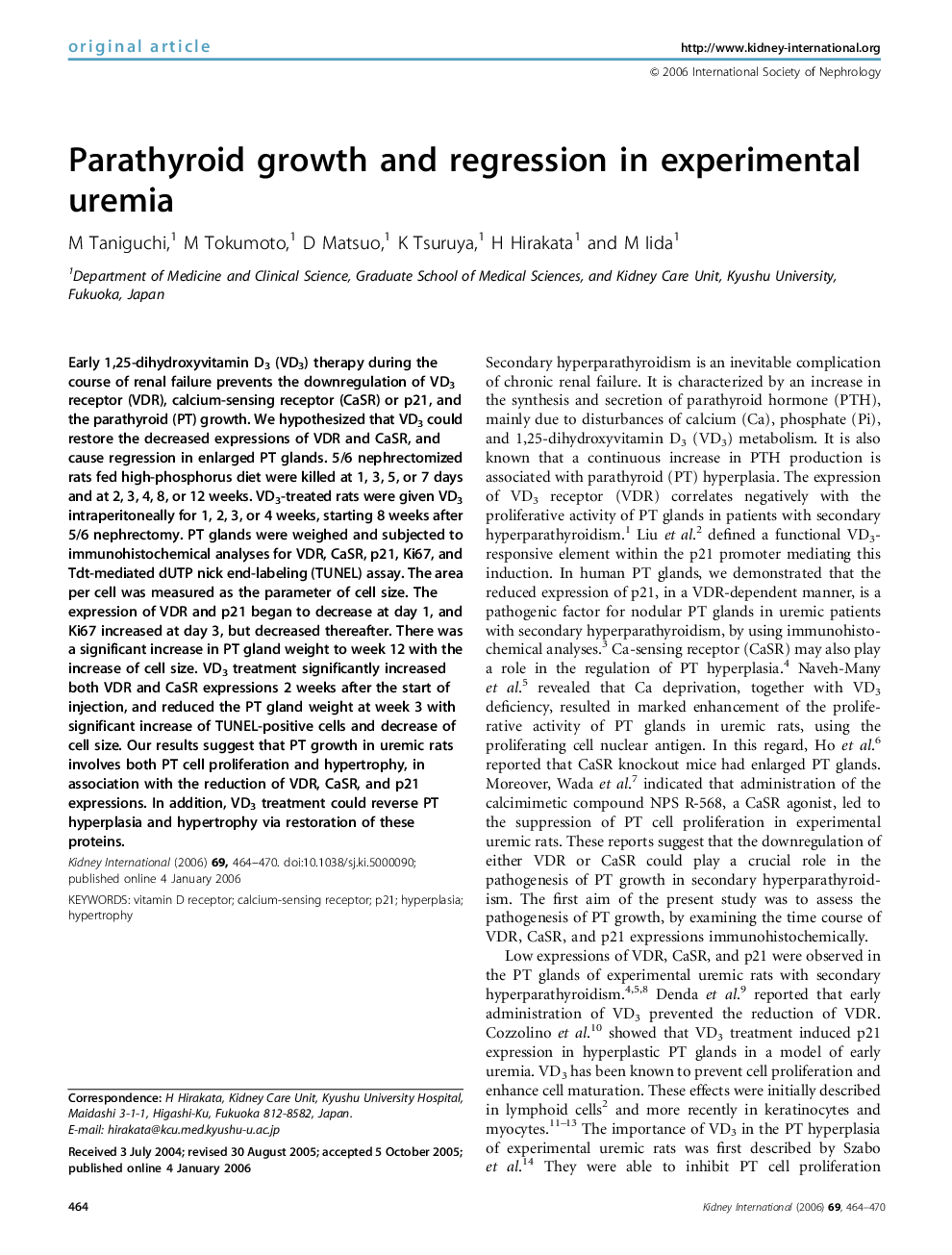| کد مقاله | کد نشریه | سال انتشار | مقاله انگلیسی | نسخه تمام متن |
|---|---|---|---|---|
| 3888062 | 1249609 | 2006 | 7 صفحه PDF | دانلود رایگان |

Early 1,25-dihydroxyvitamin D3 (VD3) therapy during the course of renal failure prevents the downregulation of VD3 receptor (VDR), calcium-sensing receptor (CaSR) or p21, and the parathyroid (PT) growth. We hypothesized that VD3 could restore the decreased expressions of VDR and CaSR, and cause regression in enlarged PT glands. 5/6 nephrectomized rats fed high-phosphorus diet were killed at 1, 3, 5, or 7 days and at 2, 3, 4, 8, or 12 weeks. VD3-treated rats were given VD3 intraperitoneally for 1, 2, 3, or 4 weeks, starting 8 weeks after 5/6 nephrectomy. PT glands were weighed and subjected to immunohistochemical analyses for VDR, CaSR, p21, Ki67, and Tdt-mediated dUTP nick end-labeling (TUNEL) assay. The area per cell was measured as the parameter of cell size. The expression of VDR and p21 began to decrease at day 1, and Ki67 increased at day 3, but decreased thereafter. There was a significant increase in PT gland weight to week 12 with the increase of cell size. VD3 treatment significantly increased both VDR and CaSR expressions 2 weeks after the start of injection, and reduced the PT gland weight at week 3 with significant increase of TUNEL-positive cells and decrease of cell size. Our results suggest that PT growth in uremic rats involves both PT cell proliferation and hypertrophy, in association with the reduction of VDR, CaSR, and p21 expressions. In addition, VD3 treatment could reverse PT hyperplasia and hypertrophy via restoration of these proteins.
Journal: Kidney International - Volume 69, Issue 3, 1 February 2006, Pages 464–470